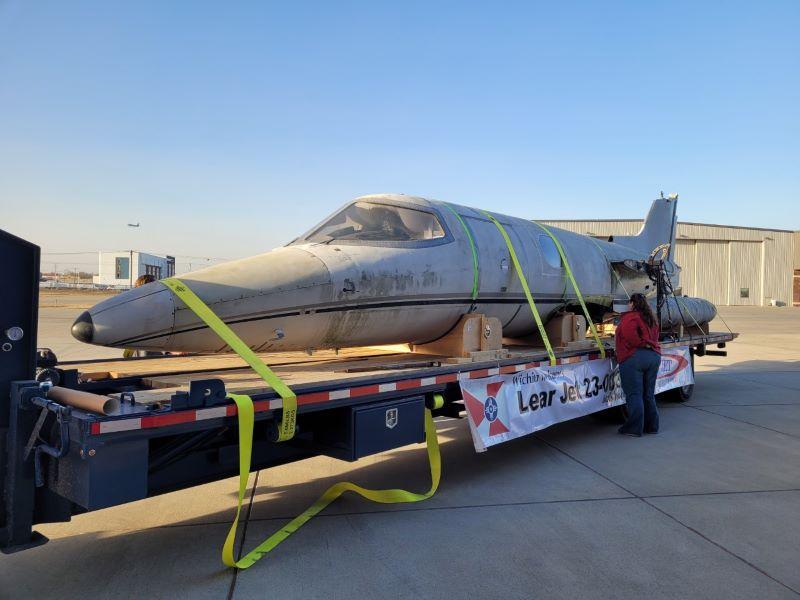
The historic Lear Jet 23 arrives in Wichita, where volunteers plan to restore it to flying condition.
Credit: Molly McMillin
WICHITA—Bart Gray, founder of Global Jetcare, an air ambulance provider in Brooksville, Florida, plans to commemorate the 100 th anniversary of an historic around-the-world flight in a unique way—by recreating the journey. Gray plans to complete the flight in a Learjet 36A, one of six Learjets in...
Subscription Required
Round-The-World Flight To Raise Money For Historic Lear Jet is published in The Weekly of Business Aviation, an Aviation Week Intelligence Network (AWIN) Market Briefing and is included with your AWIN membership.
Already a member of AWIN or subscribe to The Weekly of Business Aviation through your company? Login with your existing email and password.
Not a member? Learn how you can access the market intelligence and data you need to stay abreast of what's happening in the business aviation community.





